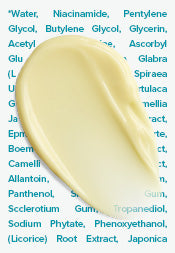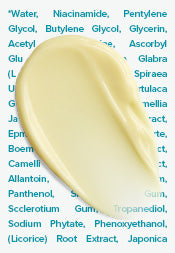When to Start a Normal Skincare Routine?
“When should I start a skincare routine?” It’s a common question—sometimes even a worry. Lots of people wait to take care of their skin until a problem shows up—that’s not the best approach. As the saying goes, “Prevention is better than cure.” Would you wait until you’re nutritionally deficient before you begin eating healthy foods? Of course not! The same approach normally applies to getting started with a basic skincare routine.
Whether you want to help prevent wrinkles, smooth away dehydrated skin, or acne breakouts, you should start a skincare routine as soon as possible. Age doesn’t matter; surprise, age is not a way to determine your skin type.
Fashion magazines and websites tend to categorise skincare by the decade, often writing about the best skincare for when you’re in your 20s, best for when you’re in your 30s, 40s, 50s, and so on. Although some of the information can be helpful, it doesn’t take into account the research-supported truth: Skin has the same basic needs at every age.
No matter your age, gender, or ethnicity, your skin needs a gentle face cleanser, exfoliant, sunscreen for the face and body, and products rich in antioxidants, and ingredients for restoring and replenishing your skin.
What can and often does change over the years is our skin type, but even that doesn’t always go in the conventional direction of becoming more dry as we age. Many women find their skin does become more dehydrated with age, but many also experience oily skin, enlarged pores, and breakouts as their skin matures. That’s why, at any age, you should choose a normal skincare routine based on your skin type and concerns, not on your age.
One important note: menopause and certain surgical procedures result in oestrogen-deficient skin. When skin loses oestrogen, the process of visible aging speeds up, and signs of it, such as wrinkles, sagging, and uneven skin tone become more pronounced. When this happens, you can seek out topical products containing ingredients that can combat some of these signs and improve skin’s overall health.
But what if you’re young and not yet concerned about signs of aging or dealing with breakouts? Do you still need a normal skincare routine? Yes, absolutely. Basic knowledge on when to apply sunscreen or how much moisturizer to use on the face and body can be learned at an early age. Here’s what everyone should be doing to take care of their skin—and you can start doing it during childhood:
- Wash your face with a gentle face cleanser in the morning and evening.
- In the daytime, apply a broad-spectrum sunscreen with SPF 30 or greater to your face, neck, and other exposed areas of your skin.
- At night, apply a face moisturizer suitable for your skin type. Oil-free moisturizers in liquid or gel formulation are ideal for oily skin types. Lotions are suitable for normal to combination skin. Use a body lotion for dry skin if you notice any signs of dehydration. Moisturizers from Paula’s Choice Singapore are enriched with the groups of ingredients mentioned above—antioxidants, replenishing, and restoring ingredients.
Those are the basics everyone can use daily; from the teens to older years, and as different skincare concerns arise, you can adapt and expand your normal skincare routine as needed. For example, you can begin using an AHA or BHA exfoliant to improve skin texture and clogged pores. Or add an antioxidant face serum to strengthen skin’s environmental defences. The trick is customising your skincare so it can consistently meet the needs of your current concerns—and helps alleviate future concerns.
Find out your skin type and what products to use here.
Shop our online store for an exclusive range of skincare products for your skin type.
References for this information
Journal of Pediatrics Review, January 2015, ePublication
International Journal of Cosmetic Science, August 2013, pages 337–345
The Journal of Clinical and Aesthetic Dermatology, September 2012, pages 18–23
Dermatology Research and Practice, August 2012, ePublication
Journal of Cosmetic Dermatology, June 2007, pages 75–82
Dermatologic Therapy, Volume 17, 2004, pages 143–148












